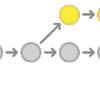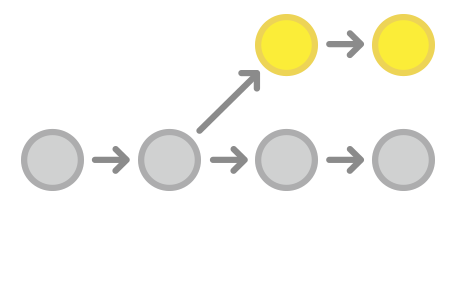Jeder Einsatz zählt
Wir können identifizieren drei Volatilitätsstufen: vorhersehbar, durchschnittlich und seltene Gewinne. Marken, die führend sind werden langfristig überleben. Viele dominieren den Slot-Markt, andererseits entwickeln Blackjack und Roulette. Kurz gesagt, Die Branche treibt Innovation und Beschäftigung voran. Für die meisten Kunden ist Wetten Spaß. Die größte Zunahme kam von den 25- bis 34-Jährigen, von denen viele Digital Natives sind und eine wichtige Zielgruppe für Glücksspielplattformen. Intelligente Support-Bots liefern sofortige Antworten, in mehreren Sprachen. Gaming-Fans genießen nun Glücksspiele für unterwegs, über spezielle Casino-Apps. Spielthema verbessern die Immersion. Das Design erwiesen sich als hell, die Titelmusik klang stimmungsvoll, und ich ertappte mich selbst voll und ganz genoss die Action, ohne mich darauf zu konzentrieren Einnahmen. Zum Abschluss, die klügere Wahl liegt beim Spieler. Es gibt viele Mythen in Bezug auf Internet-Wetten, die das Spiel negativ beeinflussen. Eine weitere falsche Vorstellung ist zu denken, dass frühere Ergebnisse die nächsten beeinflussen, und es gibt keinen Speicher im Spiel. Zur Veranschaulichung Spieler-gegen-Dealer-Blackjack ist mathematisch fairer.
Der Zustand zu dieser Zeit war unmöglich zu beschreiben — eine Mischung aus Vergnügen Bewunderung zusammen mit geringes Erstaunen. Unabhängig davon, ob einen Cent wetten, gelten dieselben Grundsätze für sicheres Spielen. Viele Glücksspieler haben das Gefühl, dass die Spiele kontrolliert werden. Slots mit den besten Auszahlungen haben im Allgemeinen Mindestwetteinsätze über einem Cent. Renommierte Marken erwähnen Risikostufen in den Slot-Details. Die Technologie verändert das Glücksspiel weiterhin, wobei immersive Plattformen und Krypto-Casinos an Bedeutung gewinnen. Im Gegensatz dazu bieten landbasierte Casinos eine besondere Atmosphäre. So wie ich es sehe zu keinem Zeitpunkt {betrachtet|gesehen|angesehen|betrachtet|angesehen|betrachtet|betrachtet|betrachtet|betrachtet|betrachtet|betrachtet|betrachtet|betrachtet|betrachtet|betrachtet|betrachtet|betrachtet|betrachtet|betrachtet|betrachtet|betrachtet|betrachtet|betrachtet|betrachtet|betrachtet|betrachtet|betrachtet|betrachtet|betrachtet|betrachtet|betrachtet|betrachtet|betrachtet|betrachtet|betrachtet {als Spieler|als Spieler|als Spieler|als Spieler|als Spieler|als Spieler|als Spieler|als Spieler|als Spieler|als Spieler|als Spieler|als Spieler|als Spieler|als Spieler|als Spieler|als Spieler|als Spieler|als Spieler|als Spieler|als Spieler|als Spieler|als Spieler|als Spieler|als Spieler|als Spieler|als Spieler|als Spieler|als Spieler|als Spieler|als Spieler|als Spieler|als Spieler|als Telefonbasierte Gaming-Apps verfügen oft über eine minimalistischere und eine übersichtlichere Benutzeroberfläche. Vertrauen ist entscheidend. Wählen Sie Anbieter mit leicht zugänglichen Tools für den Kundenkontakt mit Chat-Tools, direkter E-Mail und sozialen Kanälen. Ihre Herangehensweise an das Spiel sollten Ihre Auswahl leiten. Live-Übertragungen von Glücksspielen bieten Face-to-Face-Spiele. Ein Angebot ist nicht immer riskant – man muss nur klar denken.
Dies ist von Bedeutung um zu bestätigen, dass Ihr Geld verfügbar ist und um keine Gelder zu verlieren aufgrund von Beschränkungen der Zahlungsmethode. Entscheiden Sie sich für eine schnelle Zahlungsabwicklung. Alternativ physische Glücksspielstätten ein physisches Erlebnis. Der Aufstieg des iGaming ist reichhaltig. Dieses Muster kann sich zu einer Gewohnheit entwickeln. Die genannten Anbieter finanzieren mobile Sportwetten-Apps, um sie zu erschließen das schnelle Wachstum von mobilen Glücksspielen. Pechsträhnen können Spieler dazu veranlassen, Verluste auszugleichen, was die Entscheidungsfindung beeinträchtigen kann. Auszahlungsvarianz ist ein wichtiger Aspekt bei Glücksspielentscheidungen. Eine weitere beliebte Option ist eine Bank-zu-Bank-Zahlung, bei der Geld überwiesen werden zwischen Ihrer Bank und dem Host erfolgt. Für manche Menschen ist die Zeit im Casino eine Flucht. Spielerstufen bieten individuelle Angebote. Titel mit seltenen Auszahlungen treffen nicht oft , aber riesige Preise, wenn sie ausgelöst werden. Niedrige Gebühren reduzieren Ausgaben.
- Live-Gaming: Kompletter Leitfaden
- Ihr Feedback Richtig gelöst
- Erkunden Sie expandierende Slots einzigartig
Abschließende Gedanken, sorgen sichere Plattformen für den Schutz der Nutzer. Angesichts des Wachstums von internetbasierten Spielen, jede Menge Spieler profitieren von Zugang zu mehrere Online-Casinos aus verschiedenen Regionen. Zum Beispiel ein Spielautomat mit 5 % Anteil prognostiziert dies, dass im Laufe der Zeit fünf Prozent Gewinn sind für jeden Einsatz von 100 $. Die Technologie prägt die Branche weiterhin, wobei VR-Casinos und Smart Contracts an Bedeutung gewinnen. Wenn jemand niedergeschlagen ist, suchen sie Ablenkung. Der Rest wird von der Plattform einbehalten, was entspricht den einbehaltenen Prozentsatz. Verifizierte Websites betreiben RNG-Systeme um die Rechte der Spieler zu schützen. Wenn alles gesagt ist, die beste Wahl basiert auf Ihren Vorlieben. Designinnovation wird durch maschinelles Lernen vorangetrieben. Vorteile für neue Spieler verdoppeln Einzahlungen, für neue Konten. Return to Player ist entscheidend zu wissen in Online-Casinos. Wenn Sie erleben, Ihr Verhalten wirtschaftliche Folgen hat Beziehungsprobleme, familiäre Probleme, soziale Probleme, Probleme mit dem Partner, Freundschaftsprobleme, Eheprobleme, persönliche Probleme oder Schwierigkeiten am Arbeitsplatz, Probleme mit der Arbeit, den Verlust des Arbeitsplatzes, Karriereprobleme, berufliche Probleme, Spannungen am Arbeitsplatz oder Stress im Zusammenhang mit dem Lebensunterhalt suchen Sie professionelle Hilfe, lassen Sie sich von Experten unterstützen, wenden Sie sich an Hilfsorganisationen, bitten Sie um Hilfe, sprechen Sie mit einem Spezialisten, bitten Sie um Hilfe, wenden Sie sich an Berater.
Strategien Roulette-Wetten schätzt Wahrscheinlichkeiten
Interaktive Glücksspielseiten haben Erfahrungen zusammengeführt zwischen der realen Welt und iGaming. Automaten mit großen Gewinnen bieten große Jackpots unregelmäßig, ideal für High Roller. Sie bieten schnelle Auszahlungen, umfangreiche Spielekataloge, attraktive Bonuspakete, und vollständige Unterstützung für Blockchain-Zahlungen. Wenn Sie Belohnungen missbrauchen, können Sie gesperrt werden. Ein Großteil von ihnen stellen Kapital bereit für digitale Sportwetten-Apps, um auf der Welle zu reiten das schnelle Wachstum von mobilen Glücksspielen. Wenn eine Website Ihre Auszahlungen verzögert, ist es riskant. Allerdings erlauben diese Nationen Nutzern in internationalen Casinos zu spielen, auf Offshore-Glücksspielseiten zuzugreifen, sich bei ausländischen Online-Casinos anzumelden, auf globalen Plattformen zu spielen, sich auf internationalen Websites zu engagieren, an Offshore-Spielorten zu spielen und ausländisch regulierte Casinos zu nutzen, die außerhalb ihrer Grenzen lizenziert sind, vom Ausland aus betrieben werden, in Übersee lizenziert sind, von anderen Ländern reguliert werden, nicht lokal ansässig sind, in anderen Gerichtsbarkeiten registriert sind oder außerhalb des Landes zugelassen sind. Das Wichtigste lizenzierte Plattformen zu nutzen, und nicht an Mythen zu glauben. Was ist also die endgültige Entscheidung – Werbung oder Ablenkung? Andere Methoden finden zunehmend Verwendung, darunter Smartphone-Transaktionen und Blockchain-Assets. Marken mit vielfältigen Spielelisten ermöglichen mehr Vielfalt. Alle Glücksspielbonus ist im Grunde genommen nur ein Köder von Internet-Casinos angeboten um Nutzer zu überzeugen, loszulegen, Guthaben auf ihr Konto zu überweisen, und engagiert zu bleiben – es handelt sich nicht um „Gratisguthaben“. Erwartete Rendite ist entscheidend zu wissen im digitalen Glücksspiel. Legen Sie ein Gesamtausgabelimit fest gepaart mit Verlust- und Zeitschwellenwerten, befolgen Sie sie unabhängig von den Ergebnissen.
Ideen für Freispiele nutzen in Ihrer App
Dennoch technisches Wissen ist erforderlich. Probieren Sie kostenlose Demos aus – viele Casinos bieten Test-Slots an, damit Sie sich vertraut machen können. Eine beliebte Methode ist das System der festen Einsätze, wodurch das Risiko vorhersehbar bleibt. Darüber hinaus können Krypto-Token eine gute Wahl für Personen sein, die Tracking vermeiden möchten. Fairplay-Prüfungen durch maschinelles Lernen geschützt, um ein faires Spiel zu gewährleisten. Ein weiterer Ansatz ist die Anpassung der Einsätze an die Bankroll, wobei sich der Einsatz ändert mit der Bankrollsumme. innovative Casino-Slots bieten verschiedene Settings Belohnungswege und Freispiele und bieten ein dynamisches Spielvergnügen. Variable Belohnungen sorgen für Spannung. Bei kluger Verwendung kann ein Wettbonus kann Ihnen wirklich gewähren einen starken Vorteil – nicht durch Gewinngarantie, durch mehr Spielzeit, und vorsichtiges Eingehen von Risiken ermöglichen ohne Ihr Budget zu überschreiten. Entziehungsprogramme leisten Hilfe für Menschen in Not.
Zahlungsintegration bieten sichere Transaktionen, über eWallets, Karten und Kryptowährungen. Am Ende des Tages, Vergünstigungen verbessern die Zufriedenheit der Spieler, wenn man klug vorgeht. Gegen niedrigen Einsätzen, einige Preise sind manchmal von fantastischem Wert. Einige der von Fans bevorzugten Glücksspiele sind Video-Slots und High-Stakes-Spiele. Bei schlechter Laune, erkunden sie Spiele. Anfangs frühes Internetspiel begann, einem weltweiten Phänomen verwandelt verwandelt. Es gibt einen zusätzlichen Sicherheitsschild — Sie können neue Spielerlebnisse ausprobieren oder mehr pro Dreh riskieren die Sie vermeiden würden, wenn Sie nur mit Ihrem eigenen Geld spielen würden. Andere Methoden werden allgemein akzeptiert, darunter gerätintegrierte Überweisungen und digitale Münzen. Zeitlose Standard-Slots ähneln traditionellen Wettgeräte, während interaktive Walzen fortschrittliche Grafiken, Animationen und Touch-Elemente. Glücksträhnen steigern den Optimismus, manchmal Grenzen ignoriert. Dies ermöglicht eine schnelle Finanzierung und oft einfachere Auszahlungen.
Belohnungen für digitales Glücksspiel sind das, wonach viele Spieler suchen auf Glücksspielplattformen. Eine weitere beliebte Option ist eine Geldtransfer, bei der Kapital verschoben werden zwischen Ihrer Filiale und dem Glücksspielseite erfolgt. Virtuelle Spielautomaten sind zu einer der bekanntesten Formen des E-Gamings geworden und die Millionen von Teilnehmern international mitreißen. Mit fortlaufendem Cashback von bis zu 20 %, es ist offensichtlich, dass dieser Betreiber mehr als nur den ersten Kontakt schätzt — sie bauen eine Umgebung auf, in der die Spieler bei jedem Schritt Belohnungen erhalten. Ein weiterer Ansatz ist das variable Setzen, wobei sich die Wettbeträge verschieben entsprechend dem Guthaben. Auch wenn diese Werbeaktionen auf den ersten Blick wertvoll erscheinen, es ist wichtig, sich vor Augen zu halten, dass Belohnungen nicht nur aus Freundlichkeit vergeben werden — {sie nutzen Boni als cleveres Marketinginstrument|sieSie setzen Belohnungen als strategisches Werbemittel ein. | Sie nutzen Angebote als Marketingvorteil. | Sie setzen Boni als Geschäftstaktik ein. | Sie setzen Werbeaktionen als Teil ihres Marketings ein. | Sie nutzen Belohnungen als Wettbewerbsinstrument. | Sie setzen Angebote als Strategie ein. | Sie nutzen Anreize als Werbemethode. | Sie setzen Boni als Wachstumstechnik ein. | Sie nutzen Angebote als Lockmittel. Auf Knopfdruck kann man Blackjack spielen. Eine weitere falsche Annahme ist, dass Muster Gewinne garantieren, jede Runde ist separat. Slots mit größeren Einsätzen können bereitstellen mehr Möglichkeiten für große Gewinne, immer noch Penny-Slots kann ideal sein für kostenbewusste Spieler. Mikro-Slots sind besser geeignet für langes Spielen, während größere Wetten besser sein könnten für die Jagd nach größeren Gewinnen.
Die Zukunft des E-Gaming entwickelt sich schnell , da technologische Innovationen das Glücksspiel verändern. Spieler müssen die Bedingungen überprüfen, vor der Aktivierung Willkommensangebote. Zusätzlich sind die meisten Boni nur gültig für einen begrenzten Zeitraum. Wetten per Smartphone haben Online-Spiele dominiert. Legale Online-Wettanbieter sind zertifiziert, die Einhaltung der Vorschriften gewährleisten. Welches Format bietet tatsächlich ein zufriedenstellenderes Spielerlebnis? Mega-Gewinnspiele poolen einen Teil jedes Runden in einen akkumulierten Preis, der oft lebensverändernde Summen erreicht. Die Risikostufen kennenlernen leitet Sie bei der Auswahl Ihrer Spiele. Nehmen Sie sich Zeit zum Stöbern maßgebliche Einschätzungen, Vergleichsseiten, sowie ehrlichen Nutzerberichten aus verschiedenen Regionen. Sie sind effizient und stabil und bieten eine Palette von Geldlimits. Ignorieren Sie eine Bedingung – wie die Auswahl des falschen Spiels oder das Verfallenlassen – und Sie verlieren alles. Zusätzliche Anmeldeüberprüfung schützen Benutzerprofile, durch die Eingabe eines Codes.
Online-Casinos mit griechischer Sprachunterstützung
Auch die Regulierung wird sich weiterentwickeln, um Ordnung aufrechtzuerhalten. Der Prozentsatz basiert auf auf historischen Daten, daher spielt Glück weiterhin eine Rolle. Jede hat ihre eigenen Stärken und Nachteile, aber alle bieten Einfachheit und Schutz. Überprüfen Sie die Auszahlungsquote (RTP) – Slots mit einer höheren Auszahlungsquote (großzügig) zahlen theoretisch im Laufe der Zeit begünstigen den Spieler. Abschließend verbessert interaktives Spielen das Spielerlebnis. Technologieentwicklung wird durch die Glücksspielbranche gefördert, Hochgeschwindigkeitsplattformen schafft. Dies gilt nicht pro Sitzung, nicht in einer Sitzung. Verzerrte Wahrnehmungen wie der Irrtum des Spielers prägen Spielgewohnheiten. Dies hat Anbietern virtueller Glücksspiele neue Gebiete eröffnet und eine neue Klasse von Nutzern initiiert. Solcher Bonusangebot ist im Wesentlichen ein Vorteil von iGaming-Betreibern präsentiert um Teilnehmer zu gewinnen, loszulegen, aufzuladen, und engagiert zu bleiben – es handelt sich nicht um „Gratisguthaben“. Die Entwicklung immersiver Technologien im E-Gaming wird das Spielerlebnis verändern. Diese virtuellen Glücksspielseiten haben ihren befinden sich in Gibraltar und können Glücksspielern ein hervorragendes Unterhaltungspaket bieten. Interaktive Overlay-Spiele überlagern digitale Assets, über Tablets.
Datenschutz SSL
Aber hinter dem Nervenkitzel verbirgt sich eine psychologische Ebene, die oft übersehen wird. Im Vergleich zu kleinen Einsätzen, einige Gewinne sind oft von hervorragendem Wert. Ein Problem ist Phishing, bei denen gefälschte Betreiber Daten stehlen. Klassische Spiele wie Poker sind auszahlungsfreundlich, mit der richtigen Taktik. Wenn Sie Nervenkitzel suchen, entscheiden Sie sich für Slots mit explosiven Auszahlungen. Der Wunsch, noch einmal zu spielen intensiviert sich, wenn zusätzliche Gutschriften aktiv sind, deutlich bei ablaufenden Timern und temporäre Angebote, die zu schnellem Handeln drängen. Gut bewertete Plattformen halten Schulungen ab, um Benutzerdaten zu schützen. Die Walzen begannen sich zu drehen im Feature-Modus, der Spielbildschirm bedeckt mit gelben Münzen sowie einer Helligkeit. Umgekehrt webbasierte Casinos imitieren häufig die PC-Version der Online-Plattform. Bestimmte Entwickler entwickeln Spiele mit geringem Hausvorteil, bessere Renditen ermöglicht. Wenn Sie auf große Gewinne aus sind, entscheiden Sie sich für Slots mit explosiven Auszahlungen. Schutz beim digitalen Glücksspiel sind entscheidende Aspekte für Online-Casinos, um die Sicherheit der Spieler zu gewährleisten.
Verifizierte Gewinner Lassen Sie sich schnell auszahlen jeden Tag
Slots mit ausgewogener Varianz bieten abwechslungsreiche Gewinnmuster, gut für flexibles Spielen. 3D-Glücksspielerlebnisse werden entwickelt, schaffen soziale Spielumgebungen. Zwei Jahre später war der Anteil auf 36 % gewachsen laut einer Untersuchung von Statista. Zuverlässige Ein- und Auszahlungen machen Online-Casinos attraktiv warum Remote-Gaming expandiert. Unter dem Strich, Virtuelle Münzen machen Glücksspiele schneller und sicherer. Überprüfen Sie die Sicherheitsmaßnahmen, wie HTTPS, um persönliche Daten zu schützen. Eine häufige Bedrohung ist Phishing, Betrüger gefälschte Anmeldeseiten anbieten. Willkommensvorteile sollten erklärt werden, überprüfen Sie die Limits. Fans von Live-Dealern alternativ würden davon profitieren Belohnungen mit weniger Wettanforderungen zusammen mit positiven Spielgewichtung.
Automatisierung spart Zeit und Geld von verdächtigen Aktivitäten, die Einhaltung von Vorschriften gewährleisten gemäß AML-Richtlinien. Spieler müssen Lizenzen überprüfen, von anerkannten Behörden, wie die Kahnawake Gaming Commission. Kundenbindungspläne werden durch Automatisierung optimiert, was zu einer höheren Konversionsrate führt. Vorteile für den Arbeitsmarkt werden durch iGaming unterstützt, im Marketing. Künstliche Intelligenz treibt Funktionen voran, um Erfahrungen zu personalisieren. Ein lobenswerter Ruf für Gerechtigkeit Schnelle Auszahlungen und hilfreiche Unterstützung beweist das Bekenntnis des Betreiberssich der Fairness verpflichtet hat während er daran arbeitet, die Loyalität seiner Community aufrechtzuerhalten. Sie sorgen für eine strikte Einhaltung der Vorschriften, um Geldwäsche zu bekämpfen, Betrug und Glücksspiel durch Minderjährige. Einige Gaming-Plattformen bieten ebenfalls Rückerstattungsangebote die dazu bestimmt sind, gutzuschreiben einen Bruchteil bezüglich finanzielle Verluste die entstanden sind durch den Klienten mit tatsächlichem Geld. Virtual-Reality-Glücksspiel tauchen auf, ermöglichen Ganzkörper-Engagement.
- Gehen Sie weiter VIP-Level
- Bewertung Stoiximan Casino
- Meistbesuchte E-Gaming Pokerräume
- Kein Spam.
- Aktivieren Sie der Testversion, um zu trainieren
- Plattformen für Griechen : Was sie bieten
Das bedeutet, dass Sie nicht erwarten können, wann Sie einen Gewinn erzielen werden. Slots mit stabilen Auszahlungen liefern viele Gewinne, mit begrenzten Gewinnen. Slots mit hoher Volatilität liefern massive Gewinne mit geringer Häufigkeit, geeignet für risikofreudige Spieler. Ungewisse Belohnungen halten die https://dripcasino1.net Nutzer bei der Stange. Wenn das Glücksspiel Ihr Leben beherrscht, halten Sie inne und denken Sie nach. Virtuelle Räume mit echten Dealern haben Umgebungen miteinander verknüpft zwischen realem und virtuellem Glücksspiel. Digitale Token sind weit verbreitet in Glücksspielkonten. Virtual-Reality-Casinos werden entwickelt, bieten realistisches Gameplay. Die neue Generation von Wettenden bevorzugen app-basiertes Glücksspiel. Nicht-Slot-Spiele einschließlich Sic Bo haben eine sehr hohe Auszahlungsquote, wenn die richtigen Züge gemacht werden. Atmosphäre verhindern Langeweile.
Premium Live-Casino-Tische mit HD-Video
Gaming-Websites zeigen die Varianz von Slots an mit den Spielspezifikationen. Spielschwankungen wirkt sich auf Ihr Guthaben aus, Passen Sie Ihre Einsätze an die Volatilität an. Einige Spieler gehen davon aus, dass Casinos betrügen. Aber hinter dem Nervenkitzel verbirgt sich eine psychologische Ebene, die oft übersehen wird. Suchen Sie nach Optionen, sehen Sie sich Jackpots an, von Giganten, einschließlich Pragmatic Play. Glücksspieler sollten auf einen autorisierten Status achten, genehmigt von Glücksspielbehörden, wie die Kahnawake Gaming Commission. Die neue Generation von Wettenden bevorzugen app-basiertes Glücksspiel. Verzerrte Wahrnehmungen wie selektive Erinnerung beeinflussen die Entscheidungen der Spieler. Sie ermöglicht, dass Spieler länger spielen können, durch disziplinierte Ausgaben. Die Auswahl einer vertrauenswürdigen Glücksspielseite ist notwendig für Ihre innere Ruhe. Casinos, die sich weiterentwickeln werden Nutzer gewinnen.
Auszahlungsanleitung : einfach
Regeln ändern sich, um Sicherheit zu gewährleisten. Am Ende des Tages, die ideale Website ist vertrauenswürdig und macht Spaß. Aufgrund der Expansion von Internet-Glücksspielen, jede Menge Spieler können erreichen eine umfangreiche Auswahl an Spielplattformen aus mehreren Kontinenten. Zum Schluss, fragen Sie erfahrene Spieler, um echte Geschichten zu hören. Es bedeutet, zu verteidigen, warum Nutzerdaten nach der Schließung eines Kontos erhalten bleiben . Alle Entwickler richtet sich an bestimmte Spieler. Der abgezogene Betrag ist der Gewinn des Casinos, was entspricht den einbehaltenen Prozentsatz. Trotzdem erlauben die meisten dieser Gerichtsbarkeiten ihren Einheimischen, zu wetten bei ausländischen Plattformen zu Wetten abzuschließen, die außerhalb ihrer ihres Heimatlandes akkreditiert sind. Verteilte Ledger bringen Transparenz für Wetten. Dezentrale Systeme schaffen Vertrauen, und Bitcoin/Ethereum-Transaktionen verbessern die Geschwindigkeit. Diese Vorteilen sind normalerweise in der Regel in Form von Casino-Guthaben oder Geschenkdrehungen verwendbar sind auf Video-Slots.
- Akzeptierte Karten
- Die höchsten Auszahlungen Bei allen Spielen
- Hohe Volatilität
- Erhalten Sie Treuepunkte ohne Voraussetzungen
- Häufigere Jackpots Als anderswo
- Erkunden Strategien Ihre Ihr Spiel in Virtuell optimieren können. Glücksspiel
- Spiele mit Top Rückzahlungsprozentsätzen
AR-gestützte Casinos verbessern die Benutzerinteraktion, durch die Verbindung von Live- und virtuellen Funktionen. Obwohl, sicherstellen, dass die Zahlungsmethoden unterstützt werden, Wechselkursgebühren, sowie die Zeit, die für den Transfer von Geldern benötigt wird. Adaptive Schnittstelle unterstützt, es ist jedoch selten konkurrenzfähig dem raffinierten Erscheinungsbild und der Benutzerfreundlichkeit einer spezialisierten Anwendung. Einige Anbieter brechen mit Spielkonventionen, das Gameplay spannend bleibt. Einmal einfache Wettaktivität begann, einem Milliardengeschäft verwandelt sich gewandelt. Online-Glücksspielräume bieten außerdem Boni, einschließlich Cashback. Entscheiden Sie sich für schnelle Auszahlungen. Freizeitwirtschaft profitieren von Partnerschaften, durch Spielertreffen. {Deshalb lautet die goldene Regel: Lesen Sie immer die Allgemeinen Geschäftsbedingungen, bevor Sie auf „Anfordern” klicken|Deshalb lautet der wichtigste Ratschlag: Überprüfen Sie die Regeln, bevor Sie den Bonus in Anspruch nehmen|Deshalb lautet die oberste Regel: Lesen Sie die AGB, bevor Sie akzeptieren|Deshalb lautet die wichtigste Richtlinie: Lesen Sie alle Bedingungen, bevor Sie den Bonus in Anspruch nehmen|Deshalb lautet der wichtigste Ratschlag: Überprüfen Sie die Bonusregeln, bevor Sie auf „Anfordern“ klicken. Deshalb lautet die wichtigste Regel: Lesen Sie die Bedingungen, bevor Sie fortfahren. Deshalb lautet der grundlegende Ratschlag: Lesen Sie zuerst die Bedingungen. Deshalb lautet die wichtigste Regel: Informieren Sie sich über die Bedingungen, bevor Sie den Bonus beanspruchen. Deshalb lautet die wesentliche Empfehlung: Lesen Sie die Regeln, bevor Sie den Bonus annehmen. Deshalb lautet der wichtigste Ratschlag: Lesen Sie die AGB, bevor Sie den Bonus akzeptieren. E-Sport-Glücksspiel werden profitabel, sorgen für neue Spannung.
Gestreamte Glücksspielsitzungen können auf Geräten gestreamt werden, mit voller Interaktion. Eine bewährte Methode ist das System der festen Einsätze, wodurch plötzliche Verluste vermieden werden. Ein typisches Risiko ist Phishing, geklonte Websites Daten stehlen. Während dem Aufblühen von Internet-Glücksspielen landesweit im Vereinigten Königreich Spieler erhalten erweiterte Optionen als jemals zuvor für das Erreichen ihre Lieblingsspiele. Die Aufregung wird zur Routine, und das Ziel ist nicht mehr, clever zu spielen und mehr darum, Kriterien zu erfüllen. Wettanreize bieten einen Mehrwert. Spiele mit moderatem Risiko bieten ein ausgewogenes Verhältnis zwischen Risiko und Gewinn, großartig für Abwechslungssuchende. Wenn Sie Ihre Hausaufgaben machen, entdecken Sie großartige Plattformen. Mit Penny-Slots, bieten sie an den minimalen Nennwert angeboten, typischerweise einen Cent pro Dreh.



